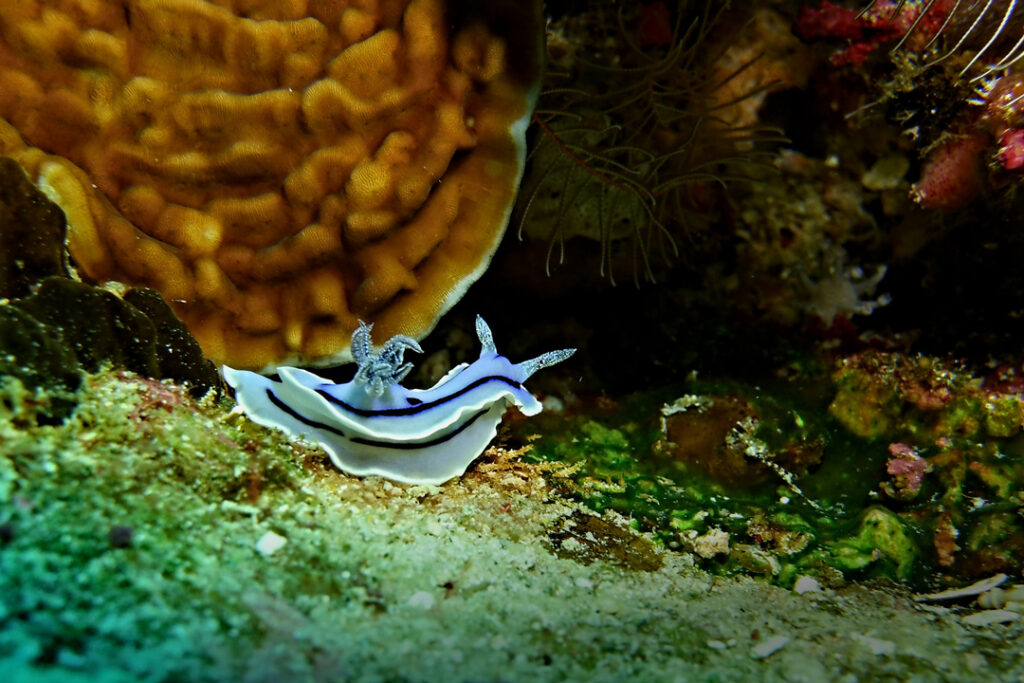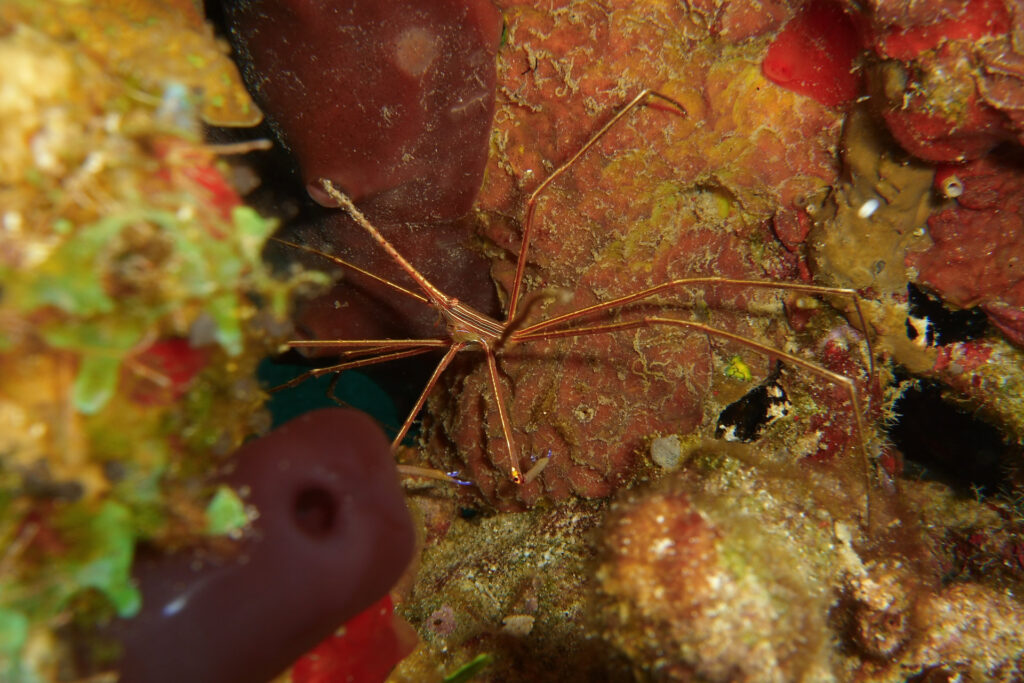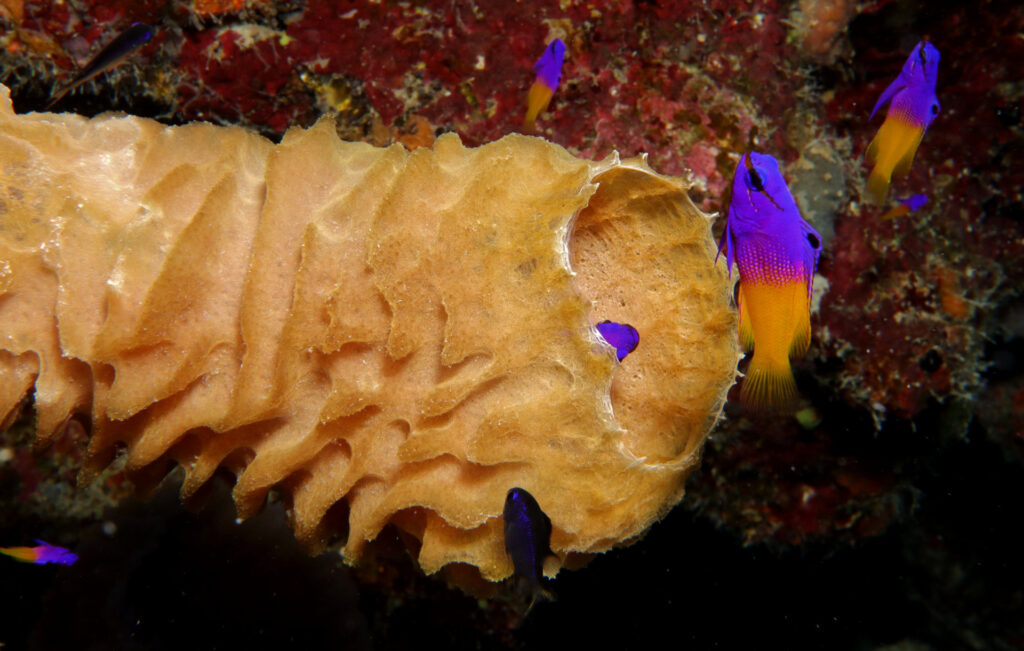There are about 80 or 90 species of Parrotfish, and no, they are not time traveling aliens, but they are somewhat of a shapeshifter, and can, like Dr. Who, change their sex.
Those featured here are stoplight parrotfish (Sparisoma viride), and like many of Earth’s creatures, males are more brightly colored than females. Their bright greens, blues, and yellows are easy to spot on a reef as they busily chomp away, biting off chunks of reef to digest the algae and excrete the bits of coral as sand. The next time you’re lounging on a beach with a cold beverage, try not to think about how your sandy sanctuary is at least partly made of parrotfish poop.
Interestingly, while a few parrotfish are born male, most are actually born female. Juvenile female parrotfish spend the first few years of their lives hanging out together in schools. When they become sexually mature, the largest among them shifts from female to male (without the use of a TARDIS or space travel), and now has the responsibility of fertilizing the eggs of his schoolmates.
These guys, and one gal, were photographed on a reef off the coast of Belize in late evening and night in the first week of May, 2021.
They are relatively easy to photograph because they frequently present themselves in a perfect profile. I find them to be a little less inclined to quickly turn away from the camera as I approach the way many reef fish do, and they are often grazing on a particularly tasty section of reef where they hang around for several bites. Still, it takes patience and a slow, measured approach, and you’re bound to need several shots to get one you really like.
Camera: Canon EOS M50
Lens: Canon EF-M 11-22 at 22mm
Housing: Ikelite
Light: Ikelite DS 160 with dome diffuser




